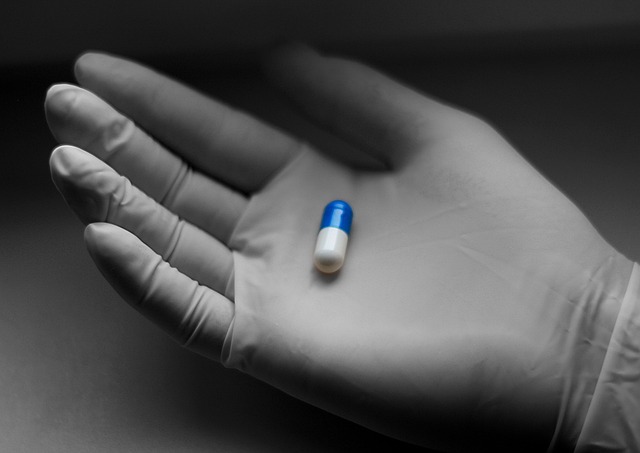Orthopedic regenerative medicine combines Platelet-Rich Plasma (PRP) and stem cell therapy to promote healing in various orthopedic conditions, offering a minimally invasive alternative to surgery. PRP accelerates tissue regeneration with growth factors, while stem cells differentiate into specialized types, creating an optimal healing environment. This innovative approach shows promise in treating injuries and degenerative conditions, leveraging the body's natural healing mechanisms for holistic treatment.
In the realm of orthopedic regenerative medicine, a groundbreaking approach combines Platelet-Rich Plasma (PRP) and stem cell therapy. This innovative treatment harnesses the body’s inherent healing abilities, offering a promising solution for various orthopedics conditions. PRP accelerates natural healing processes, while stem cells promote tissue regeneration. By integrating these powerful modalities, healthcare professionals unlock unprecedented potential to repair, rebuild, and restore injured orthopedic structures, redefining patient outcomes in the world of regenerative medicine.
Understanding Orthopedic Regenerative Medicine
Orthopedic regenerative medicine is an innovative approach that combines the potential of Platelet-Rich Plasma (PRP) and stem cell therapy to promote healing and repair in various orthopedic conditions. This cutting-edge treatment offers a promising solution for patients seeking alternative options to conventional surgeries. PRP, rich in growth factors, accelerates tissue regeneration by stimulating cells involved in healing. When combined with stem cells, which have the ability to differentiate into various specialized cell types, this therapy creates an optimal environment for damaged tissues to heal and regenerate.
The integration of PRP and stem cell therapy in orthopedics represents a significant advancement in regenerative medicine. It provides a holistic approach to treating orthopedic injuries and degenerative conditions by harnessing the body’s natural healing mechanisms. This dual-pronged strategy has shown encouraging results, offering patients a potential route to recovery without the need for extensive surgical interventions.
PRP: A Natural Healing Process
Platelet-rich plasma (PRP) is a natural healing process that utilizes the body’s own regenerative capabilities. It involves harvesting blood from a patient, separating the platelets from other components, and concentrating them into a rich plasma solution. These platelets are known for their role in clotting but also contain growth factors and bioactive proteins that stimulate tissue repair and regeneration. In orthopedic regenerative medicine, PRP is increasingly used to treat various injuries and conditions affecting bones, joints, and soft tissues.
By accelerating the body’s natural healing process, PRP can help promote tissue restoration and reduce recovery times. When injected into damaged areas, such as torn ligaments, tendon injuries, or articular cartilage defects, PRP provides a rich source of bioactive molecules that foster cellular proliferation and differentiation, ultimately supporting the repair and regrowth of injured tissues. This minimally invasive approach aligns with modern orthopedic practices, offering a promising avenue for enhanced healing and improved patient outcomes in orthopedics.
Stem Cell Therapy: Unlocking Cellular Potential
Stem cell therapy represents a groundbreaking advancement in orthopedic regenerative medicine, offering a promising avenue for healing and repairing damaged tissues. At its core, this therapeutic approach harnesses the body’s inherent ability to regenerate by stimulating the growth and differentiation of stem cells. These versatile cells have the remarkable potential to morph into various specialized cell types, such as bone, cartilage, or muscle cells, depending on the body’s needs.
By introducing stem cells directly into the affected area, orthopedists can accelerate the natural healing process. Stem cell therapy has shown particular promise in treating degenerative conditions like osteoarthritis, where it can help regenerate worn-out cartilage and restore joint function. Moreover, combining stem cell therapy with platelet-rich plasma (PRP) amplifies its effects by creating an optimal environment for cellular growth and reducing inflammation, paving the way for more effective orthopedic regenerative medicine solutions.
Integrating PRP and Stem Cells for Optimal Results
Integrating Platelet-Rich Plasma (PRP) and stem cell therapy offers a promising approach in orthopedic regenerative medicine. PRP, derived from a patient’s own blood, is rich in growth factors that stimulate healing and tissue regeneration. When combined with stem cells, which have the potential to differentiate into various cell types, this synergistic effect enhances the body’s natural repair mechanisms.
The collaboration between PRP and stem cells provides a multi-faceted treatment option for orthopedic conditions. PRP serves as a bioactive scaffold, fostering an environment conducive to cellular proliferation and tissue restoration. Simultaneously, stem cells contribute by replacing damaged or lost cells, such as cartilage or bone, ensuring long-term structural integrity and functionality. This integrated therapy has shown promising results in treating sports injuries, articular cartilage defects, and degenerative conditions, paving the way for a new era of personalized and effective orthopedic care.
Orthopedic regenerative medicine, combining PRP (platelet-rich plasma) and stem cell therapy, represents a groundbreaking approach in orthopedics. By harnessing the body’s natural healing mechanisms and unlocking cellular potential, these treatments offer promising solutions for various musculoskeletal conditions. Integrating PRP and stem cells optimizes regenerative outcomes, providing patients with potentially reduced recovery times and enhanced long-term health. As research continues to advance, the future of orthopedic care looks brighter with these innovative therapies at its forefront.
